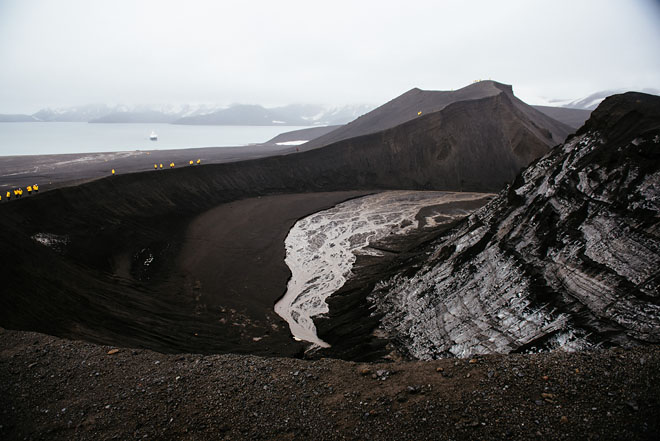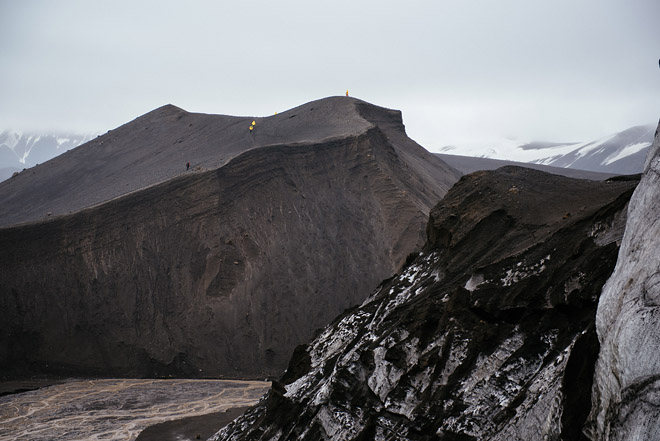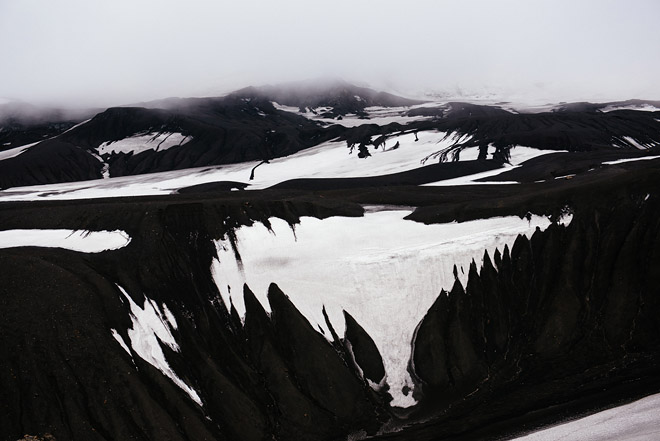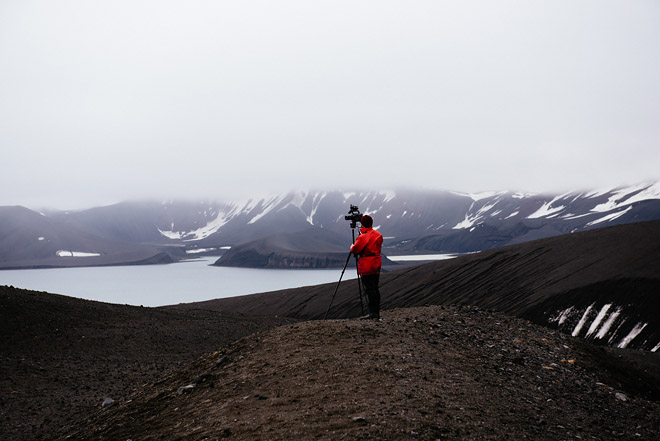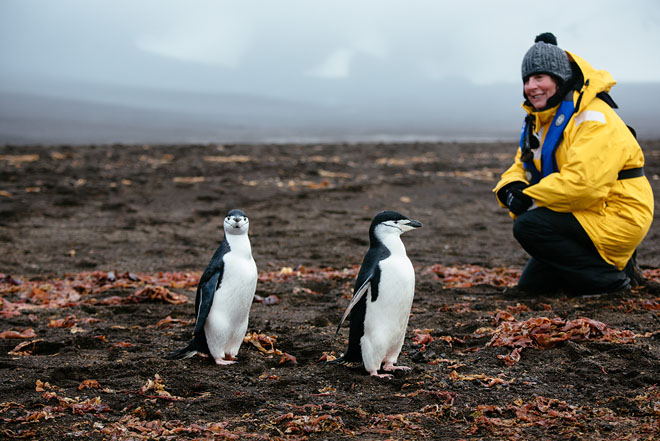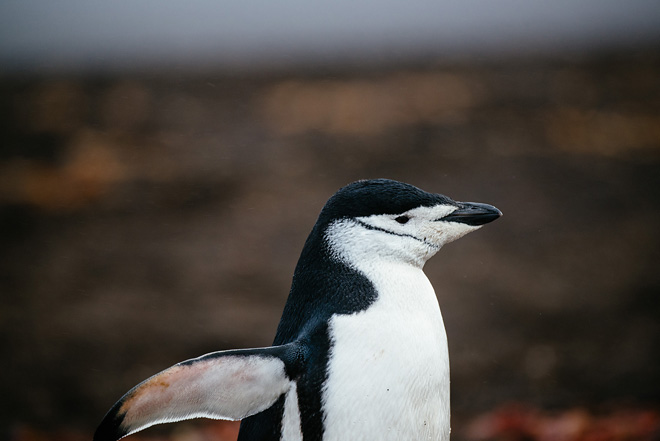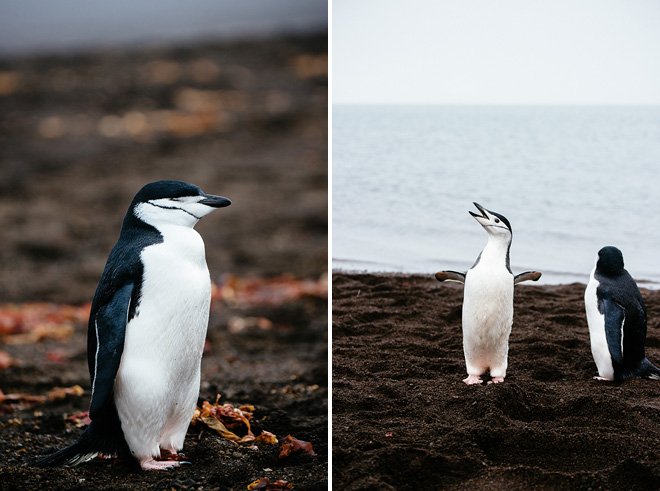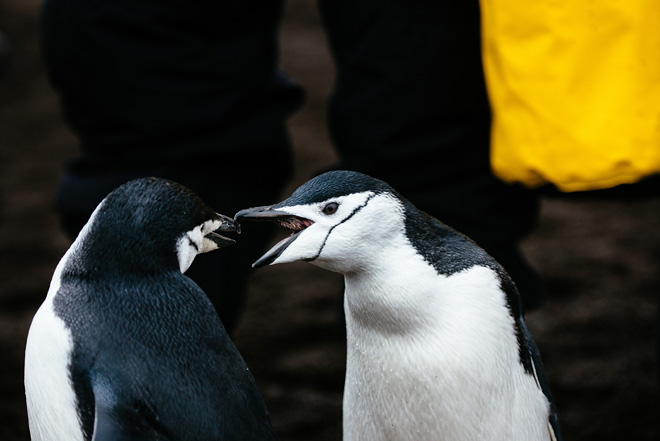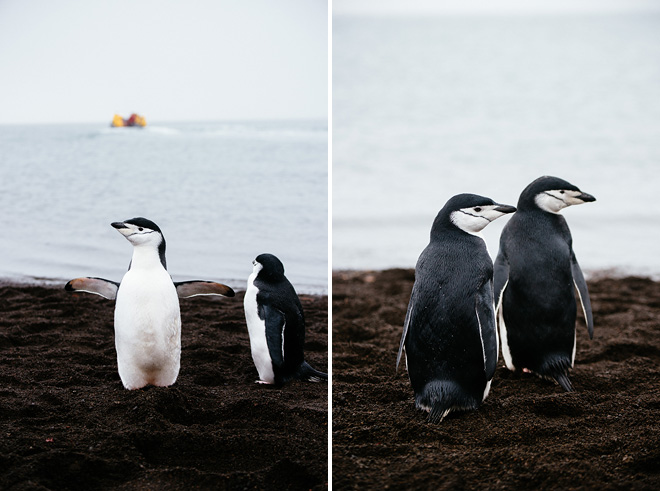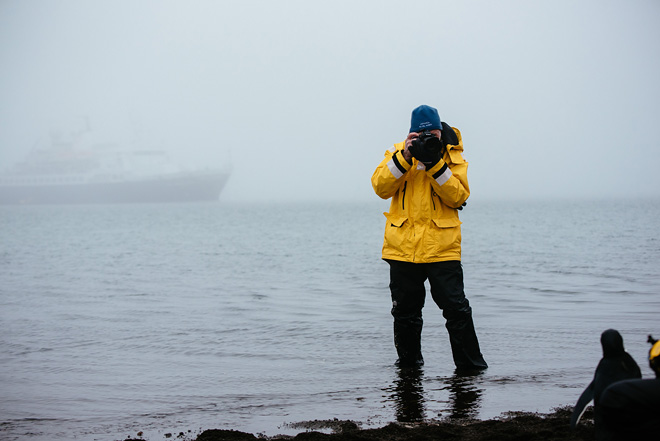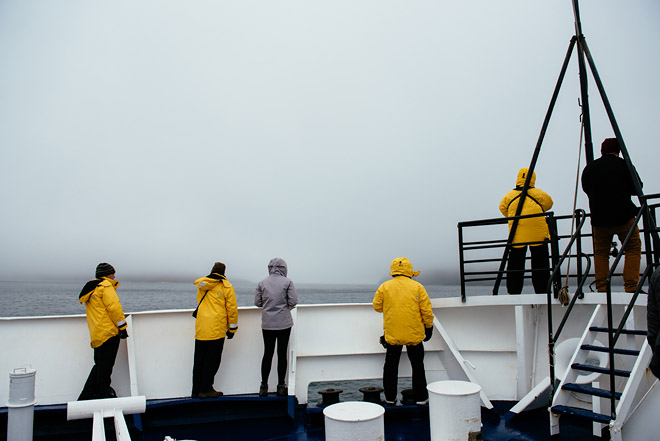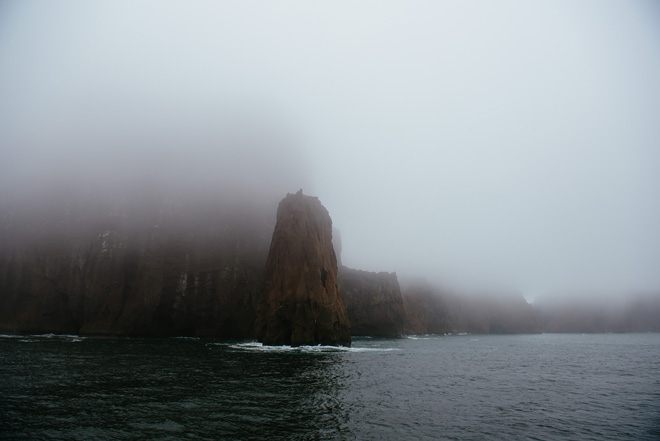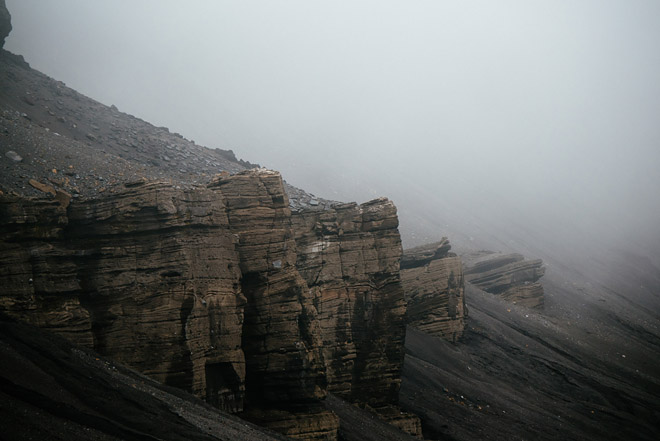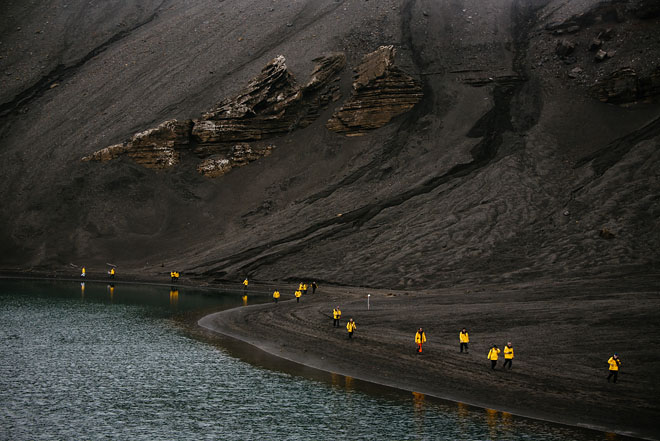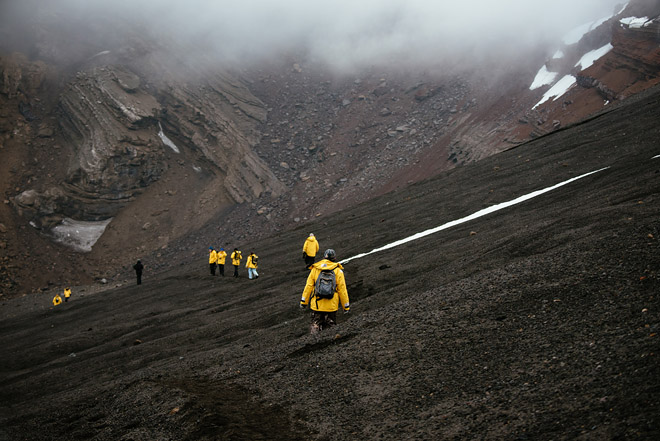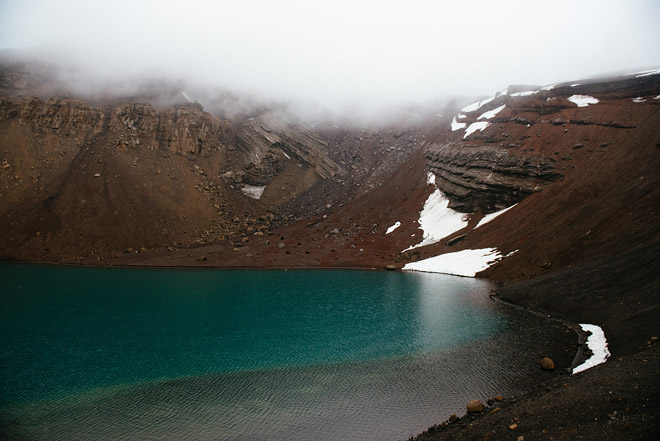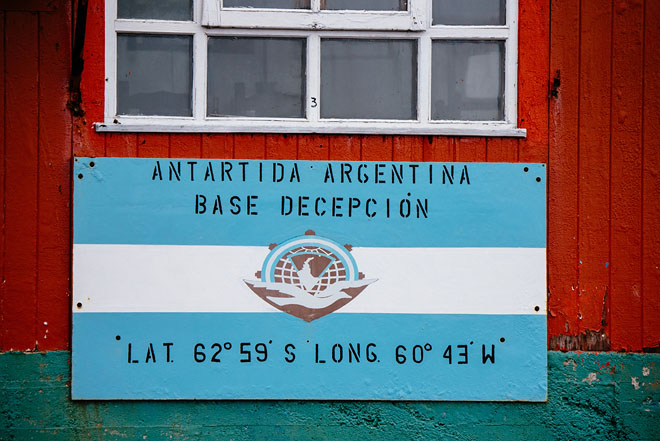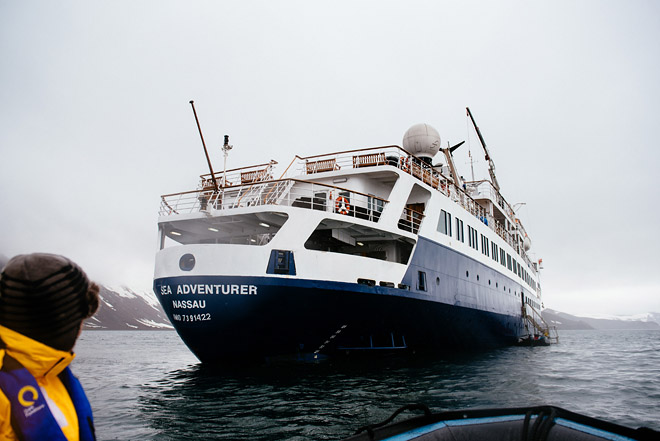I want to start with an overview that hits the highlights of the trip, so here is where we went and a little bit about each place.
DAYS 1-3: GETTING THERE
We set sail on a Monday night, sailing out of Ushuaia at the southern tip of South America. It takes two full days to cross the Drake, so we weren’t expected to reach Antarctica until Thursday morning.
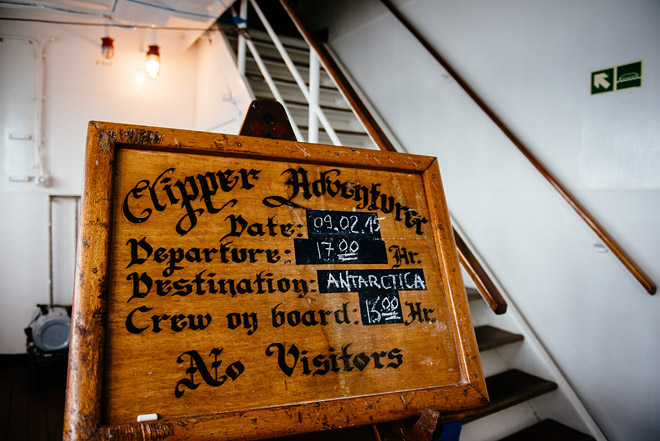
We spent the time on the Drake going to lectures–on history, wildlife, the ice–and preparing for our landings by learning zodiac loading procedures, doing bio-security checks (vacuuming off all outerwear and backpacks that we would be taking onto land), and getting our parkas and waterproof boots.
We also had our first sightings of icebergs and wildlife. In fact we sailed right into a feeding frenzy, with whales and seals and penguins everywhere around us, chasing each other.
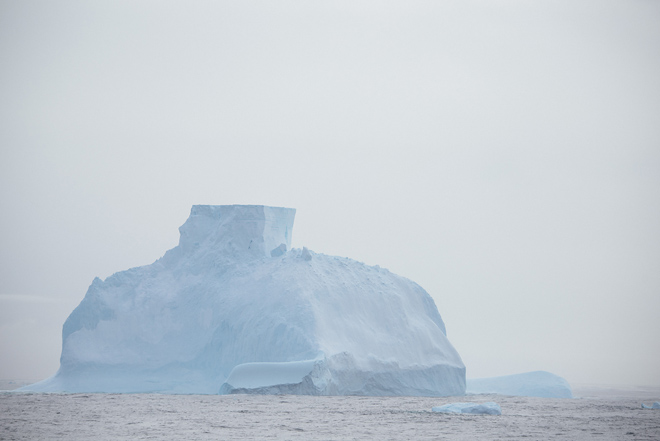
The first iceberg!
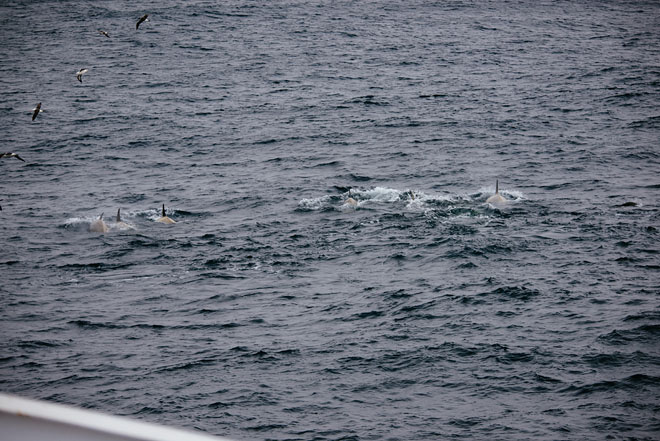
I count at least six orcas in this image.
And then sometime overnight after the second full day at sea, we reached the Antarctic peninsula and anchored in spot to await our first landing.
DAY 4, MORNING: CUVERVILLE ISLAND
First landing! I walked out onto deck before breakfast to this:
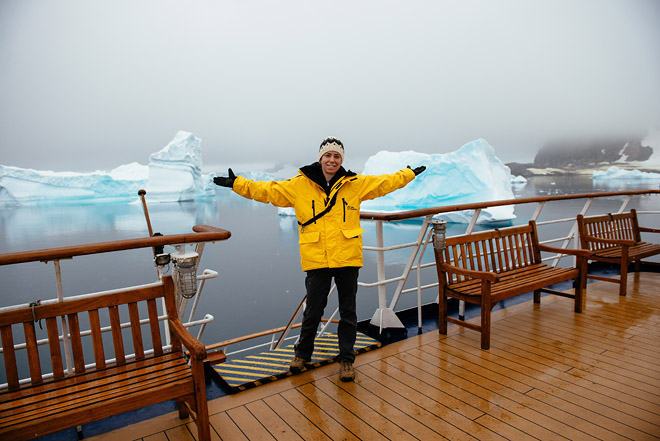
This was the first time I cried. I don’t want to be dramatic about this, but, you guys, I was seriously overwhelmed with how amazing it all was.
There was a large gentoo penguin rookery here, with lots of chicks and lots of molting penguins. (They lose all their feathers and grow new ones, and during this time they cannot go into water to get food, so they sit in one spot to conserve energy. It takes about two weeks to complete the molting process.)
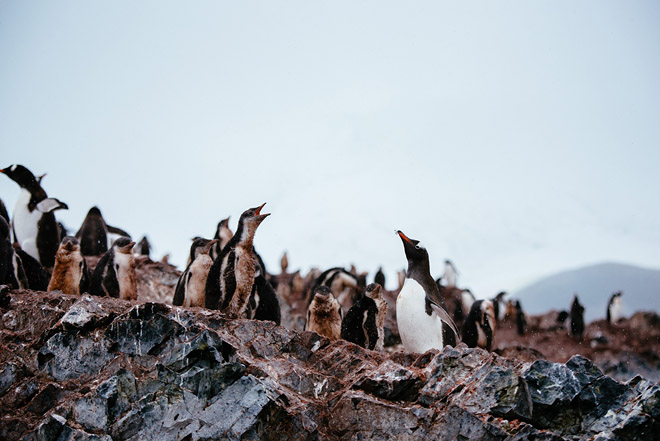

DAY 4, AFTERNOON: DAMOY POINT and PORT LOCKROY
These two sites are right next to each other, so we were ferried between them on zodiac without having to return to the ship in between. On Damoy Point we hiked up a glacier. Just as we reached the top, the clouds parted and the sun came out and we had blue skies!
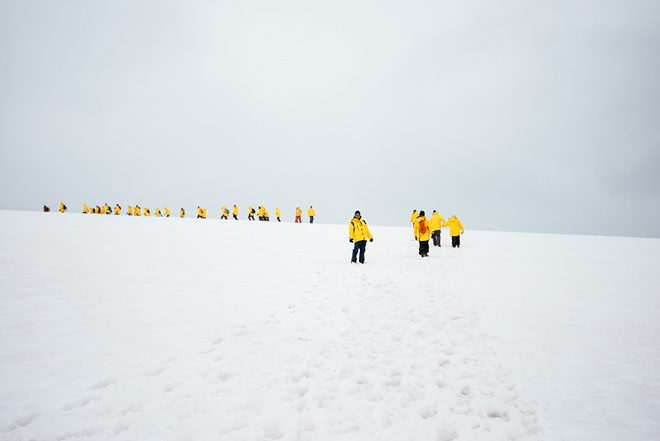
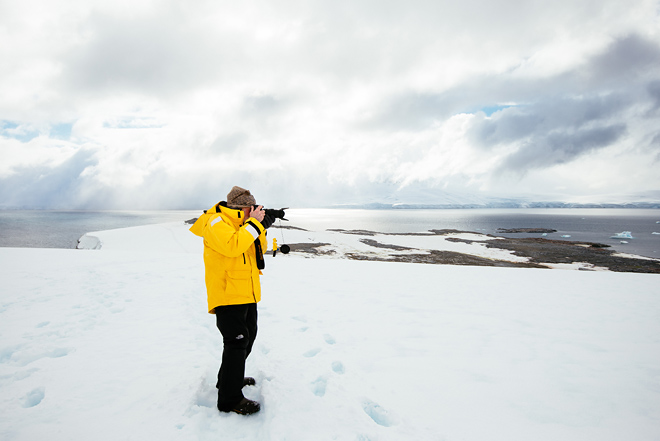
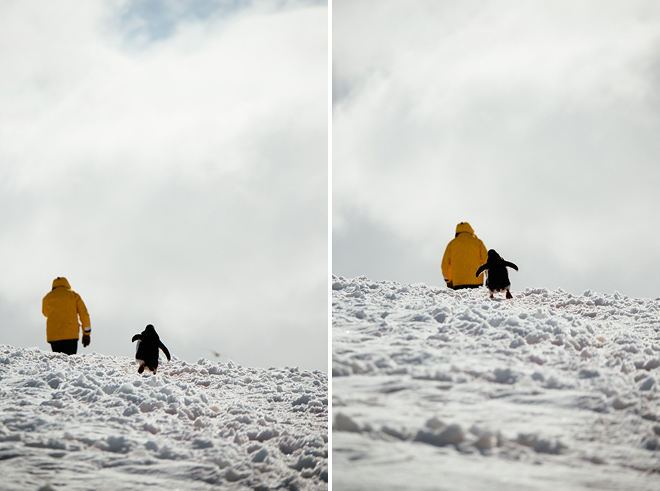
A penguin joined us on our hike.

This is Port Lockroy as seen from Damoy Point. This is where there’s a gift shop, museum, and post office. I mailed some postcards from here that may get here in a month or two.
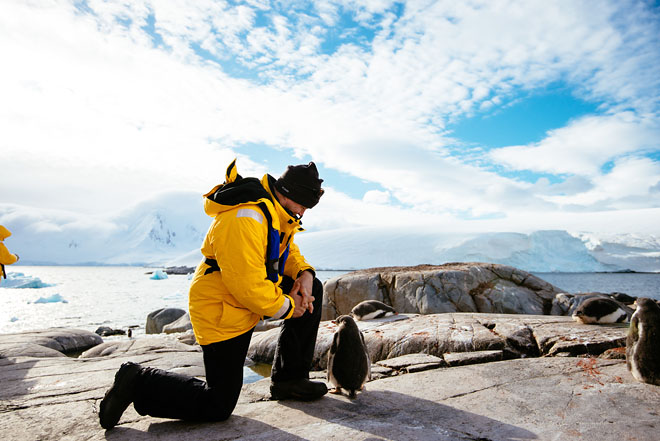
At Port Lockroy, penguins were everywhere, and the chicks were especially curious about us.
DAY 4, EVENING: LEMAIRE CHANNEL
After dinner, we sailed through this ridiculously scenic narrow channel. The ice was right there!
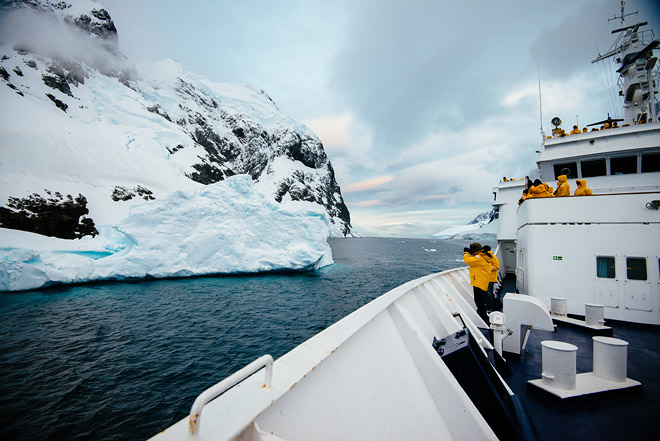

And as if the scenery weren’t enough, a minke whale came out to play!

Seriously, what a first day.
DAY 5, MORNING: ANTARCTIC CIRCLE
At about 8:45am this morning, we crossed the circle. We were all out on deck to celebrate as they counted down the approach. “Fifteen minutes to crossing!” “Five minutes!” “One minute!” And then they counted down 10…9…8…. And, you guys, I cried again.
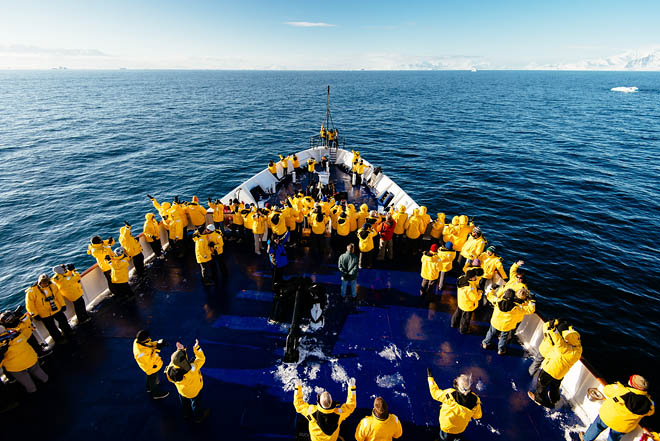
The moment that we crossed the circle, the captain blew the ship’s horn and everyone cheered.
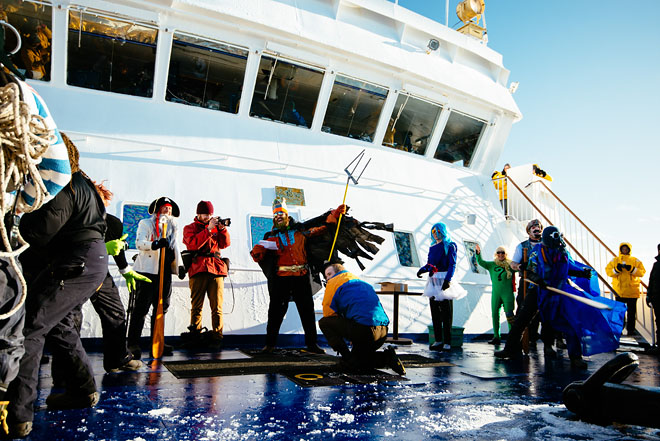
Then there was a circle crossing ceremony that involved the staff in costume, all except for Alex, the expedition leader, who is seen here kneeling before them. He had sea water poured over his head, he had to kiss a (stuffed animal) krill, and then he had penguin poop (face paint) smeared on his forehead. After this, they invited all of us to participate, too.
DAY 5, LATE MORNING: CRYSTAL SOUND
We were unable to do the landing they had hoped to do this day, because we couldn’t reach it through all the ice. So instead we did some scenic cruising in zodiacs. The ice was incredible, the skies were blue, and the zodiacs allowed us to get up pretty close to wildlife.

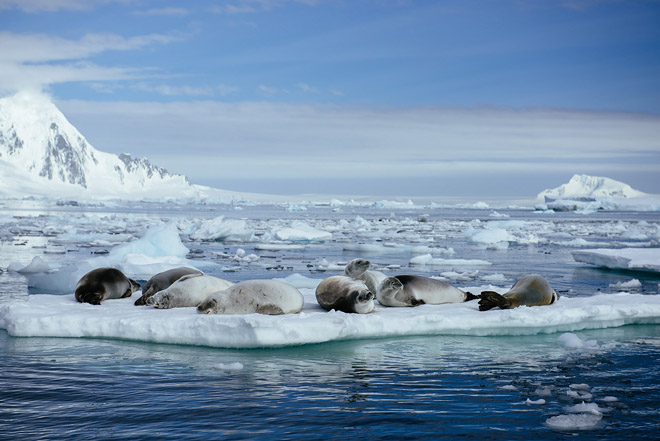
Crabeater seals, which don’t actually eat crabs. They eat krill, just like everything else in Antarctica.

Our ship, the Sea Adventurer, in the distance
DAY 6, MORNING: HORSESHOE ISLAND
The site of an old British research station, the ice was incredible here. We were far enough south (still south of the circle at this point) that there weren’t many penguins (only two that we spotted this morning) but there were lots of seals. I mostly couldn’t get over the blue of the ice.

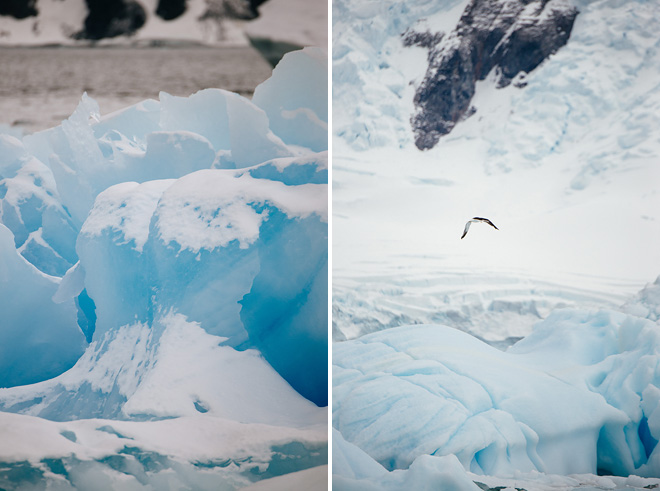
DAY 6, AFTERNOON: CARVAJAL
This was, we believed, an abandoned base, but when the Quark team pulled up in their zodiac to scout out the landing site, they discovered a group of Chileans living there. No one had occupied this base in 14 years. The Chileans were surprised to see us but were very welcoming. They were there to do repairs to the base and get it ready to be used as a research station again. They had been there since November and we were the first people to stop there. Quark gave them a couple crates full of fresh produce, which they hadn’t had since November.
Here we saw dozens (maybe hundreds) of fur seals, as well as some elephant seals.
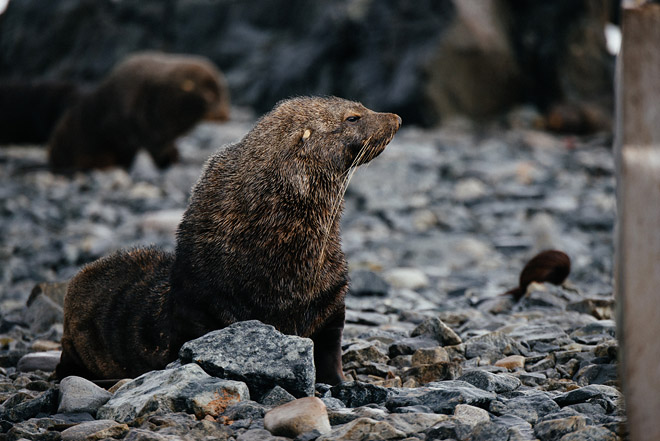

You can see how elephant seals got their name. These weren’t even full-grown adult seals. They will still probably double in size. What.
That night after dinner we sailed right into an Antarctic hurricane, which turned out to be way rougher than our Drake crossings.

I didn’t even get photos of the biggest waves, because I was trying to protect my camera when those hit.
DAY 7, EVENING: PETERMANN ISLAND
We spent most of this day repositioning further north. Ice slowed us down so we weren’t able to make the afternoon landing they’d been hoping for, but after dinner we landed at Petermann Island.

Mostly we saw gentoo penguins (the ones with the white earmuffs and orange beaks, on the right) but there were a few Adelies here (on the left, with the solid black heads). The Adelie penguin might be my favorite, because they look so striking with their bright blue eyes against the black.
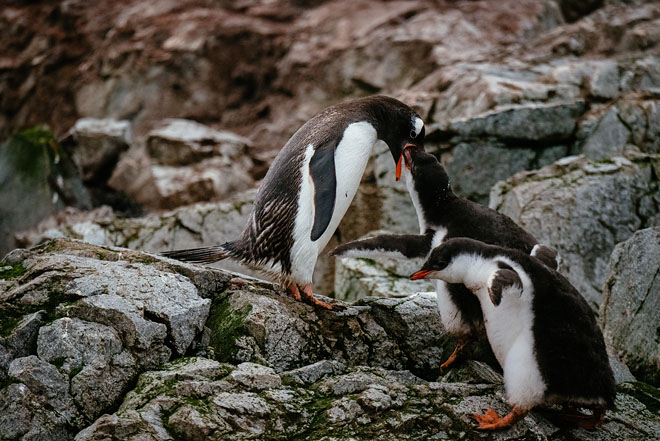
Penguins feed their young by eating krill and then regurgitating it into their chicks’ mouths. Mmmm.

The Sea Adventurer
It was mostly cloudy while we were at Petermann Island, and just in the last few minutes before it was time to go back to the ship the light took on this beautiful glowing quality.
DAY 8, MORNING: PORT CHARCOT
This was a split landing–half time on land, half time on a zodiac cruise.
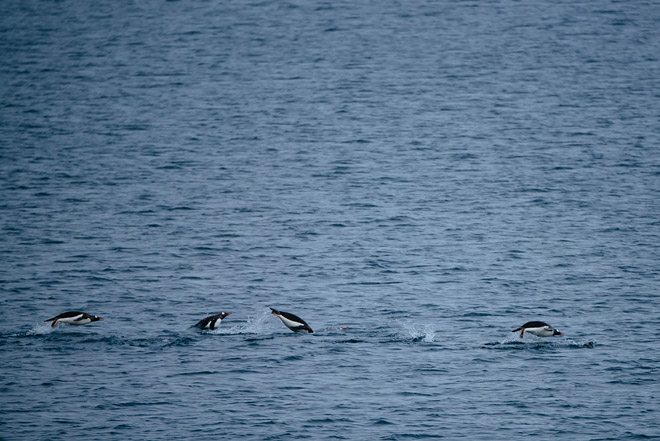
I had no idea that penguins leap in and out of the water as they swim. We saw this many times on this trip.
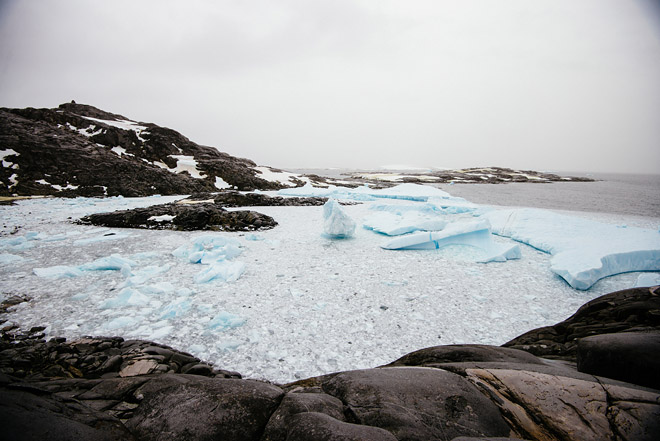

These penguins are headed into the water. They like to enter the water in groups, in case there are predators waiting.
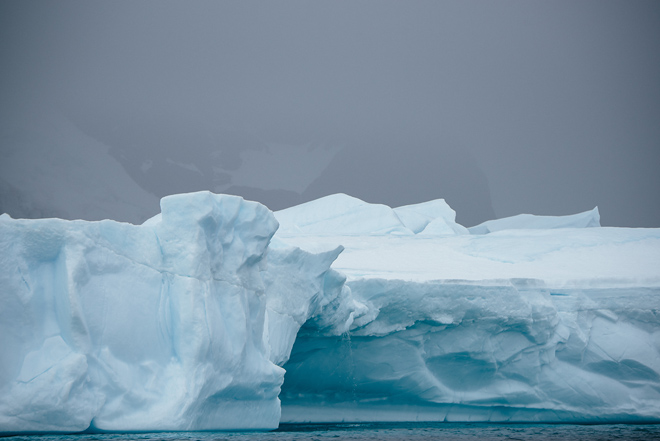
The zodiac cruise took us through a maze of icebergs. Do you see the waterfall coming off this one?


Double arch! What does it mean??
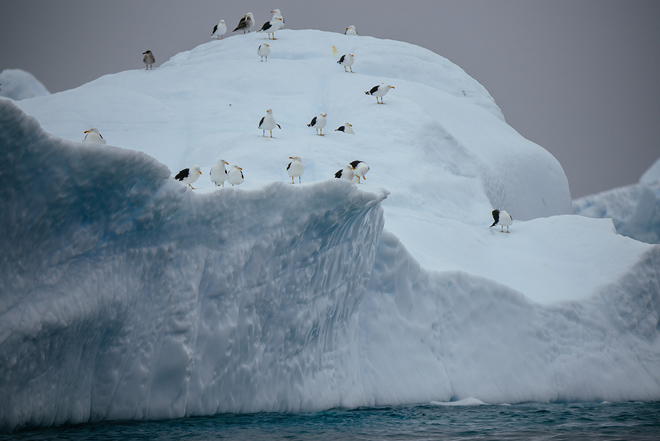
DAY 8, AFTERNOON: USEFUL ISLAND
As we headed here this afternoon, we came across a few humpback whales that swam around the bow of our ship for a while.

They were right there.
Then we dropped anchor at Useful Island, the site the team had chosen for our polar plunge.
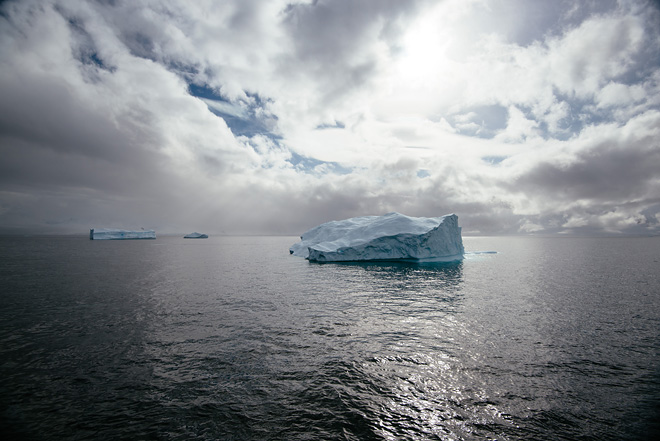
This was our view from the ship as we leaped from the ship into the icy Antarctic waters.
DAY 8, EVENING: NEKO HARBOUR
Our one and only continental landing! (As opposed to islands.) We had tried for two other landings on the actual continent but those had fallen through because of ice/weather. Third and final attempt was a success! It was mostly cloudy but we still had some amazing light as the sun dropped lower in the sky.

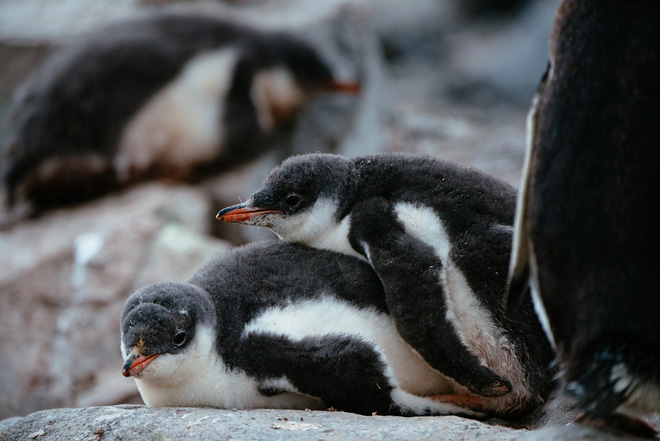
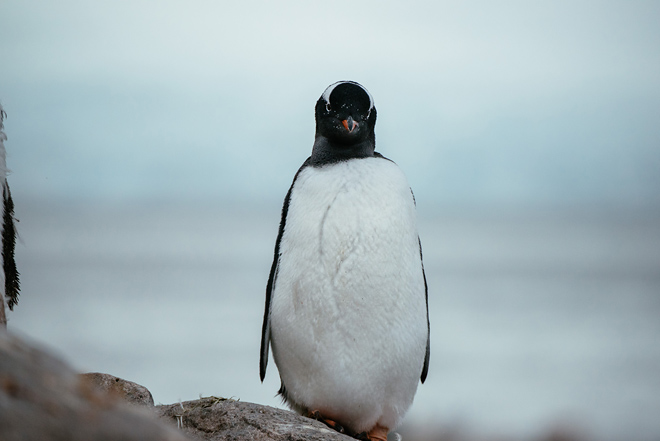
DAY 9, MORNING: DECEPTION ISLAND, ARGENTINIAN BASE
Sailing into the caldera of an active volcano! The two sites we visited at Deception Island were completely different than anywhere else we went. They are still ice, but covered in volcanic ash.

First we sailed through the narrow entrance to the caldera, called Neptune’s Bellows, which is only 750 feet wide and tricky to navigate.
Our first landing here was at the site of an Argentinian base.

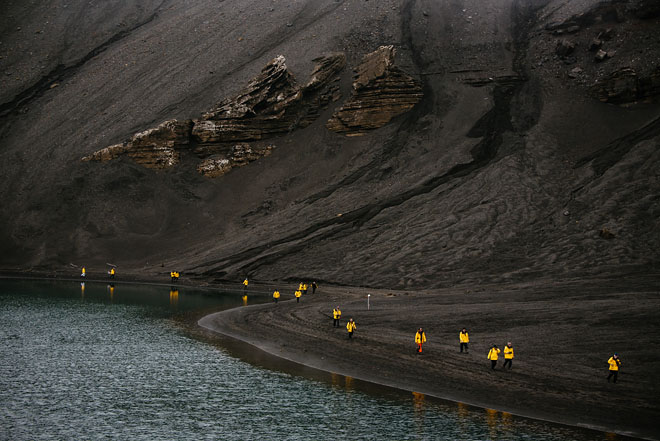
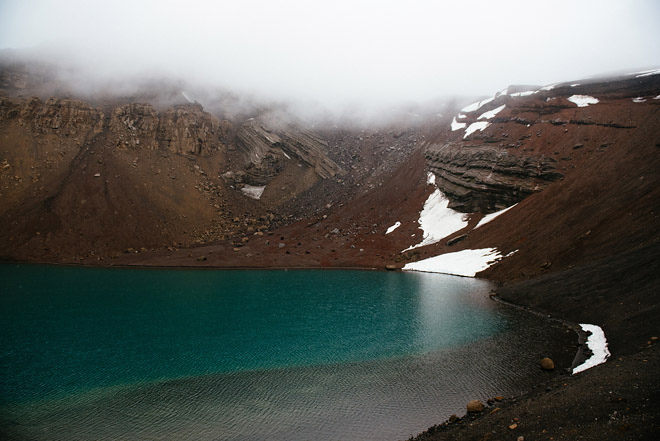
We did a hike up to the top of a glacier, where we hoped to be able to look down to a rookery of over 50,000 pairs of chinstrap penguins. However, it was very foggy, and our visibility was eventually reduced to near zero, so we were unable to see the penguins.
DAY 9, AFTERNOON: DECEPTION ISLAND, TELEFON BAY
During lunch, we repositioned to the other side of the caldera, and then had our last landing of the trip. Here we were able to hike to the rim of some craters, which were pretty impressive.
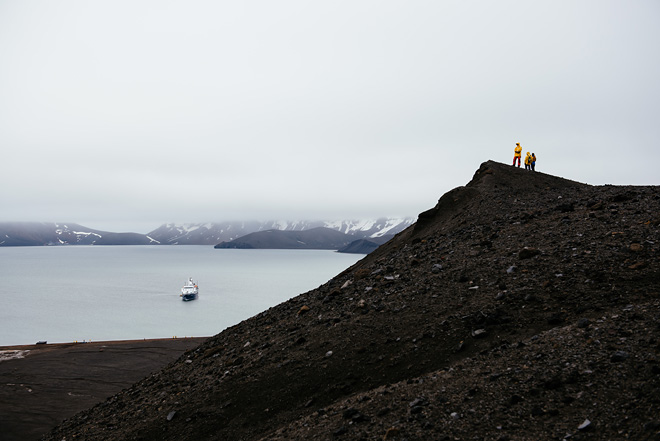
And then as we were headed back to the beach to board the zodiacs and go back to the ship, two chinstrap penguins swam up out of the water and hopped onto the beach.

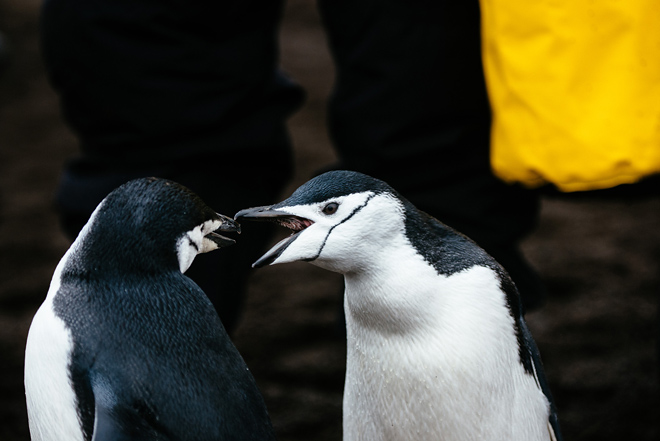
They were very curious about us, and even when we would move away, they would waddle closer and walk among us. It was a very exciting end to the last landing.
DAYS 10-11: DRAKE PASSAGE
And then we were sailing back toward South America. Two more days at sea, filled with more lectures and lots of chances to talk and share photos with each other. We had a very smooth crossing and made such good time we had time to detour past Cape Horn.

DAY 12: BACK IN USHUAIA
And then we were back, and our incredible adventure to the bottom of the world came to an end. A truly amazing trip.




